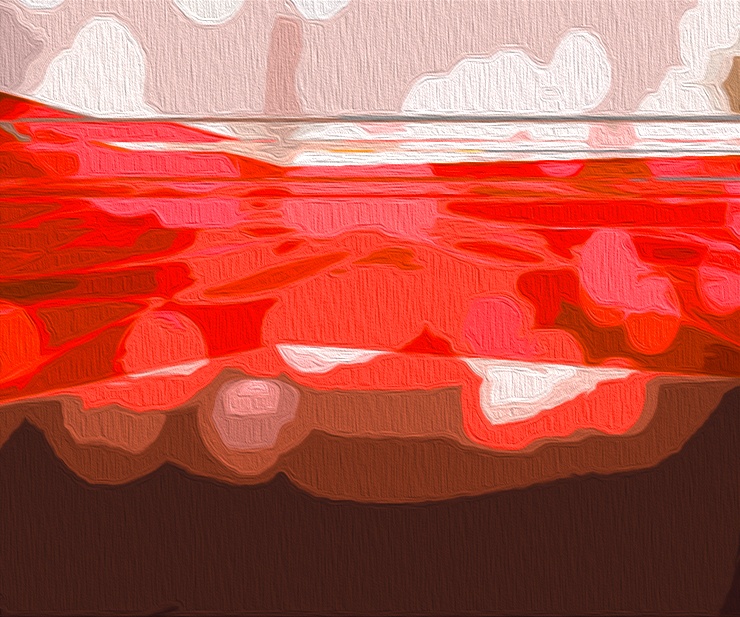[TAG0]
Orbital Sidekick (OSK), a satellite startup, is launching a constellation hyperspectral imaging microsatellites that are powered by Nvidia’s Jetson AGXX Xavier AI module.
Satellite images like those on Google Earth are typically 2D planes. These new satellites, equipped with special light sensors, will spend five years in a sunsynchronous orbit. They will perform 3D imaging spectroscopy to detect with incredible accuracy what is happening at any given set of (XYZ, Z)* coordinates. This new constellation of satellites will use its sensor suite to monitor the earth for hydrocarbon leakages — something that was historically the responsibility of pilots with special training.
OSK's GHOSts are able to help reduce hydrocarbon spillage. This is a problem wherever we use petroleum. They're not only useful for "big oil". Nvidia says the platform can show a hyperspectral indicator of areas on a map with signals such as cobalt or lithium, and distinguish between them and the soil.
Kaushik Bangalore (Vice President of Payload Engineering at Orbital Sidekick) stated that space-based hyperspectral intelligence "basically breaks down the spectrum of light so you can see what's occurring at a chemical level without having to use an aircraft."
Seeing GHOSts
OSK uses six Global Hyperspectral Observation Satellites to do its work (GHOSts for short). Nvidia's Jetson AGX Xavier module is used by the GHOSts to process hyperspectral data from its suite sensors. OSK's AI module allows it to crunch algorithms for imaging and spectroscopy. This allows OSK to detect leaks in real-time, right at the edge. OSK's Sigma Monitor platform can then display insights such as the type and size of the leak at a GPS location, and its urgency, on a screen.
Bangalore stated that the industry-standard methods of detecting such issues in the past were not reliable because they relied on small aircraft and pilots to look out for leaks. Instead, they relied on trained eyes rather than other technologies.
He said that OSK's GHOSts are able to do the same work as pilots, but with greater speed, objectivity, and accuracy.
2018 saw the launch of OSK's older-generation system on the International Space Station. The NVIDIA Jetson X2 module was used to perform the analysis. OSK's current generation uses its own microsatellites powered by the NVIDIA Jetson AGX Orin Module. The platform also has an aerial version that captures hyperspectral imagery from aircrafts in flight. This is similar to Perseverance's highly sensitive cameras that can tell which rocks are made from which minerals. This tech could be the way that science fiction starships scan celestial bodies and planets.
Better, Faster, Stronger
OSK's current mission is to orbit Earth using its "hyperspectral intelligence" to detect gas or hydrocarbon leaks. It has so far detected hundreds of methane and liquid hydrocarbon gas leaks and more than 300 "intrusive activities" related to digging and construction, according to Tushar Prabhakar, OSK founder and chief operational officer.
"With Nvidia Jetson AGX Xavier we can process all data taken onboard a Satellite in an orbit within the same orbit. This allows continuous data capture."
To accelerate data processing, the system uses Nvidia CV–CUDA and CUDA Python software toolkits. It's also a lot data.
Bangalore stated that hyperspectral imagery presents a major challenge because of the sheer volume of data involved. This data can sometimes be 400x larger than 2D visual data.
The US Department of Defense is naturally interested in the GHOSts' capabilities because of their fine imaging. The satellites spend most of their time trying stop pipeline accidents becoming full-blown energy crises. OSK hopes that its satellites will be used to ensure a more sustainable and safer future.
Bangalore stated that hyperspectral intelligence is being used to create a more sustainable Earth. "Our technology can help find lithium and prevent methane and greenhouse gases from being released into the atmosphere…It has a very direct effect and it's exactly what the planet requires."
*(X, YZ, Z) is for latitude, longitude and altitude. In 3D spectral analysis, it can also be written as (xy,l).
Read
- Students Create DIY Supercomputers Using Nvidia Jetson Nanos
- Nvidia Announces Jetson Orin Nano, Updates Isaac Nova Orin Dev Kit
- Nvidia's Jetson AgX Orin packs an AI Punch in a Small Box
————————————————————————————————————————————————————————————
By: Jessica Hall
Title: Nvidia AI Powers New Array of Hyperspectral Imaging Microsatellites
Sourced From: www.extremetech.com/extreme/342574-nvidia-ai-powers-new-array-of-hyperspectral-imaging-microsatellites
Published Date: Wed, 25 Jan 2023 17:00:05 +0000

Leave a Reply